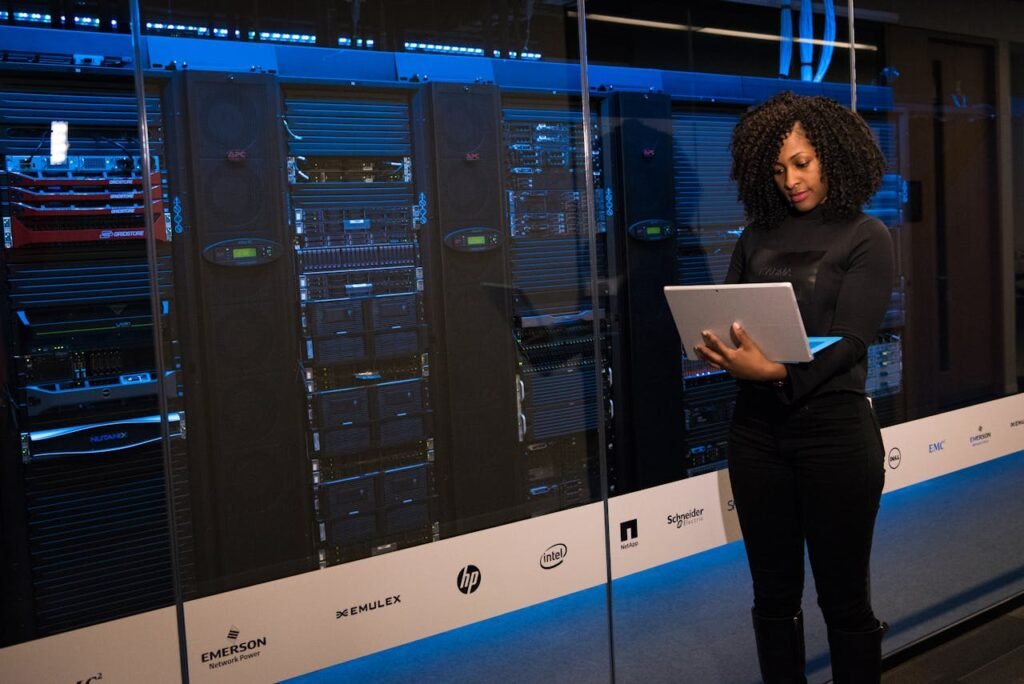The state of technology is developing with unprecedented speed and changing all spheres of our life. In the coming ten years or so, a surge of developing trends will transform our work, life, and relationship with the world. This blog considers the main technological forces that will change society, business, and the global economy, including artificial intelligence, sustainable innovations, and many more.
1. Introduction: Increased Rate of Change
The past ten years have witnessed the disruption of industries by technology, the redefinition of economies, and a change in the pace of everyday life. When we look into the future, in the next decade we will see even greater changes. Artificial intelligence, quantum computing, hyperconnectivity, and biotechnology convergence are on the way to transforming not only the opportunities but also challenging fresh possibilities. Being aware of such trends is important to every business, professional, and anyone interested in surviving in a very dynamic world.
2. Artificial Intelligence (AI) and Machine Learning
The backbone of innovation sector-wise will be AI.
By the year 2030, it will not be an unusual thing to utilize AI, just like using electricity. Machine learning, computer vision, and natural language processing will be used by organizations to automate tasks, decision-making, and personalize experiences. Generative AI that can generate text, images, and even code will transform the creation of content, design, and customer service.
Key Impacts:
- Healthcare: With predictive analytics, drug discovery, and robot surgery, treatments will be more personalized and effective.
- Business: The AI intelligence-driven supply chains, marketing, and customer engagement will also be simplified.
- Every day life: Artificial intelligence hardware and a virtual assistant would become more natural and smooth.
3. Quantum Computing: The Next Frontier
Quantum computers will be able to solve problems unsolvable by classical computers.
Such machines will address complex issues in cryptography, material science, logistics, and pharmaceuticals by exploiting principles of quantum mechanics.
Key Developments:
- Cryptography: The quantum algorithms will be able to crack most existing encryption, following which a transition to quantum-safe security is possible.
- Drug Discovery: The modeling of the interplay of molecules will then speed up the discovery of new medicines.
- Optimization: The decision-making process of quantum-powered industries will range across finance to logistics.
Despite its promise, quantum computing remains in its early stages, with commercial applications expected to grow over the next decade.

4. Edge and Cloud Computing
Processing of data is being brought nearer.
Edge computing enables devices to process and use the data locally to decrease the time it takes to analyze data and use less bandwidth. This number is estimated to reach 75 percent by the year 2025 in terms of data that will be processed without usage of a traditional data center or a cloud.
Key Benefits:
- Real-Time Decision-Making: Essential for autonomous vehicles, industrial automation, and smart cities.
- Enhanced Privacy: Sensitive data can be processed locally, reducing exposure to cyber threats.
- IoT Integration: Billions of connected devices will rely on edge computing for seamless operation.
Cloud computing will continue to provide scalable resources, but the future lies in a hybrid approach that combines the best of both worlds.
5. Connectivity: 5G, 6G, and Zero Latency
The digital economy will be supported by ultra-fast, reliable connections.
Lightning-fast 5G and 6G networks are coming, and they will facilitate technologies such as autonomous vehicles, immersive reality, and the Internet of Things.
Key Features:
- Near-Zero Latency: Real-time execution is often required in applications where latency does matter, e.g., remote surgery and autonomous driving.
- Greater Coverage: Low-Earth orbit satellites and highly developed wireless communications networks will open up coverage to sparsely populated regions.
- New Tech Support: The rapid networks will help to exploit the benefits of the AR, VR, and smart devices.
6. Extended Reality: AR, VR, and the Metaverse
Immersive technologies will transform how we interact with digital content.
Augmented Reality (AR), Virtual Reality (VR), and Mixed Reality (MR)—collectively known as Extended Reality (XR)—are becoming more accessible and powerful.
Key Trends:
- Metaverse: A permanent and common virtual environment to work, play, and socialize.
- Enterprise application: XR will have the benefit of training, remote collaboration, and design visualization.
- Consumer Adoption: The use of lighter, cheaper headsets that will be capable of producing more content richness will lead to mainstream adoption.
7. Biotechnology and Healthcare Innovation
Biotech breakthroughs will redefine health, agriculture, and sustainability.
Advances in gene editing (like CRISPR), synthetic biology, and personalized medicine are making treatments more effective and sustainable.
Key Innovations:
- Gene Editing: Cure and prevention by design have come on the horizon.
- Synthetic Biology: Sustainable materials and biofuels will be produced with engineered organisms to use.
- Lab-Grown Food: The cultivated meat and crops with improved characteristics will solve the problems of food security and negative impact on the environment.
8. The Internet of Things (IoT) and Smart Cities
IoT will connect billions of devices, transforming cities and industries.
Smart sensors and connected devices will manage everything from traffic and energy to healthcare and public safety.
Key Applications:
- Smart Cities: Optimal use of resources, minimum traffic, and better life conditions.
- Industrial IoT: Automation and predictive maintenance within manufacturing and logistics.
- Home Automation: Smart houses that contain security, energy control, and entertainment systems.
The number of IoT devices is projected to reach 30 billion by 2025.

9. Sustainable and Green Technologies
Technology will play a central role in addressing climate change.
From renewable energy to electric vehicles and carbon removal, sustainable innovations are gaining momentum.
Key Developments:
- Renewable Energy: Solar, wind, and advanced storage solutions will power the future.
- Electric Vehicles: By 2030, EVs could account for over 40% of new car sales in some markets.
- Climate Tech: Early warning systems, drought-resistant crops, and carbon capture will help mitigate environmental risks.
10. Cybersecurity and Digital Trust
As digital threats evolve, so must our defenses.
AI-powered cybersecurity, zero-trust architectures, and privacy engineering will be essential to protect data and infrastructure.
Key Trends:
- AI for Security: Automated threat detection and response.
- Digital Identity: Secure, user-centric identity systems.
- Blockchain: Decentralized ledgers for transparent and tamper-proof transactions.
With the rise of cyberattacks, robust cybersecurity will be non-negotiable for organizations and individuals alike.
11. Low-Code/No-Code and Automation
Software development is becoming more accessible.
Low-code and no-code platforms, powered by AI, will allow non-programmers to build applications and automate workflows.
Key Impacts:
- Democratization of Tech: Anyone is able to innovate without knowing much about tech.
- Accelerated Development: Quickly developing the prototype and the implementation of the solution.
- Generative AI tools will be able to aid in writing and optimizing code.
12. What’s Next: Speculative Technologies on the Horizon
While the above trends are well underway, some speculative technologies could emerge by 2035:
- Multimodal AI Avatars: Online assistants accessible through voice, text, and image communication.
- DNA Data Storage: data storage at ultra-dense densities through synthetic DNA.
- Environmentally Friendly Meat and Produce: Lab-Grown Food in Large Amounts.
- Robotics and Drones: General application in transport, healthcare, and life activities.
13. Table: Comparison of Key Technology Trends
| Technology Trend | Main Applications | Key Benefits | Challenges/Concerns |
|---|---|---|---|
| Artificial Intelligence | Automation, healthcare, business | Low latency, privacy, and scalability | Bias, privacy, job displacement |
| Quantum Computing | Cryptography, pharma, logistics | Solves complex problems | Scalability, security |
| Edge/Cloud Computing | IoT, real-time analytics | Low latency, privacy, scalability | Security, interoperability |
| 5G/6G Connectivity | IoT, AR/VR, vehicles | Speed, reliability, coverage | Infrastructure cost, security |
| Extended Reality (XR) | Training, entertainment, design | Immersion, collaboration | Accessibility, privacy |
| Biotechnology | Healthcare, agriculture | Personalised medicine, sustainability | Ethics, regulation |
| IoT & Smart Cities | Urban management, industry | Efficiency, data-driven decisions | Security, data overload |
| Sustainable Tech | Energy, transport, agriculture | Climate mitigation, cost savings | Adoption rate, cost |
| Cybersecurity | All digital sectors | Trust, protection | Evolving threats, complexity |
| Low-Code/No-Code | Software development | Accessibility, speed | Quality control, security |
14. Frequently Asked Questions (FAQ)
Q1: Which technology will have the greatest impact in the next decade?
A: Artificial intelligence is expected to have the most far-reaching impact, influencing everything from healthcare and finance to entertainment and education.
Q2: How will quantum computing affect cybersecurity?
A: Quantum computers could break current encryption methods, necessitating the development of quantum-safe cryptography to protect sensitive data.
Q3: What is the role of edge computing in the future?
A: Edge computing will enable real-time data processing for IoT devices, autonomous vehicles, and smart cities, reducing latency and enhancing privacy.
Q4: Will automation and AI take away jobs?
A: While some jobs may be automated, new roles will emerge in AI development, data analysis, and tech management. Upskilling and adaptability will be key.
Q5: How can technology help fight climate change?
A: Sustainable technologies—such as renewable energy, electric vehicles, and climate monitoring systems—will be crucial in reducing emissions and building resilience.
Q6: What are low-code and no-code platforms?
A: These platforms allow users to create software applications with minimal coding, making technology development more accessible to non-programmers.
15. Conclusion
Rapid technological progress and unprecedented change will define the next decade. Artificial intelligence, quantum computing, immersive realities, and sustainable innovations will reshape industries, economies, and societies. While these trends offer immense opportunities, they also present challenges, from ethical dilemmas to cybersecurity threats. Embracing lifelong learning and adaptability will be essential for individuals and organizations to navigate and thrive in this exciting future.
